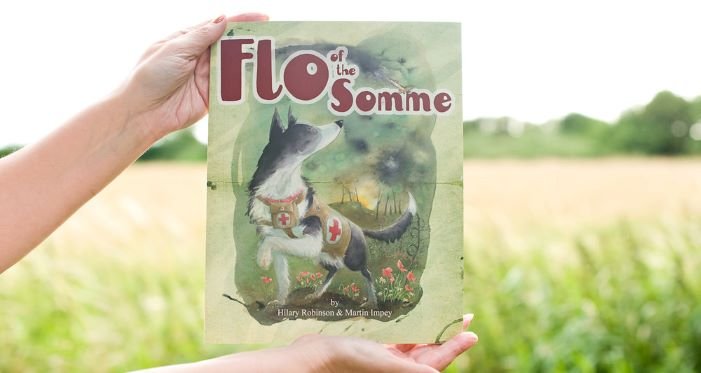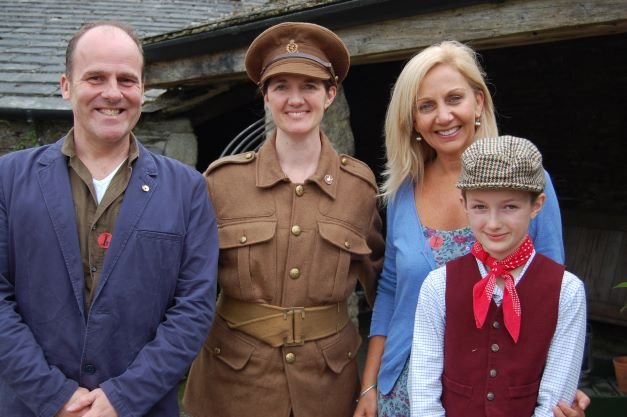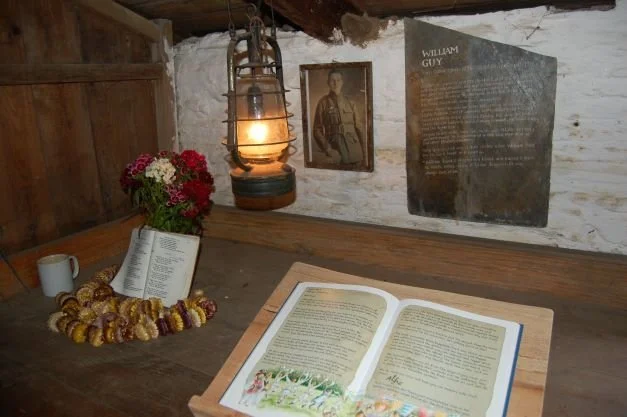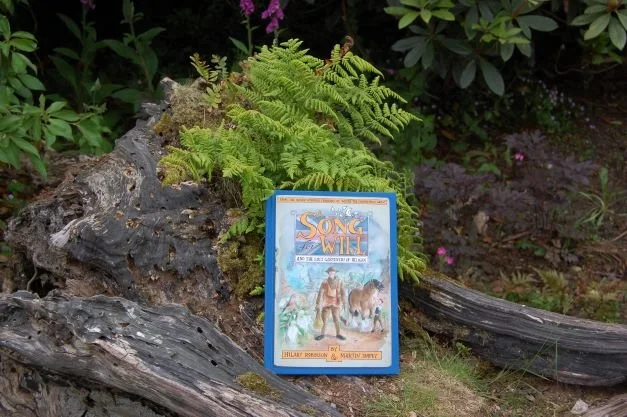Meet Hilary Robinson
Hilary Robinson, with Martin Impey, is well known for her excellent series of books about Ben and Ray and their experiences in the First World War. Winners of the NSTBA 2016 Poetry Category for ‘Flo of the Somme’ and the 2017 Quality Fiction Category for ‘A Song for Will and the Lost Gardeners of Heligan’, their books are highly respected and much used by teachers as well as families. Although Hilary is the author of over 60 books, this Q and A is focused on these titles in recognition of Remembrance Day.
1. Your quartet of books about Ben and Ray are deeply poignant stories which are incredibly popular in schools. Do you have a favourite story amongst them.
I love all the stories for different reasons but, perhaps, if I were to choose a favourite I would opt for Where The Poppies Now Grow because, without this title, the other three wouldn't exist. It is also dedicated to our great uncles, both of whom died at the Battle of the Somme. I also find that children identify with Ben and Ray- who represent every soldier who served - and the fact that they remained close friends throughout their lives. It has been wonderful to see how children have engaged with the story and the characters and developed an interest in their own family and local social history as a consequence. That way the lives of those that served and those that perished live on so that we never forget how easy it is to slip into war. Words and friendship will always be the most powerful weapons in the pursuit of peace and that is Ray and Ben's legacy.
2.The stories are told using the cumulative verse style. Why did you choose this way of telling them?
This device helps young children engage with the story content and the use of rhyme helps them to expand their vocabulary, because the rhythm, rhyme and repetition serves to reinforce. I changed this structure for Peace Lily because this was the time that reflected the start of something new so by altering the pace and pattern readers grasped the notion that a new world was looming.
3. ‘A Song for Will and the Lost Gardeners of Heligan’ continues to be one of my all-time favourite books and I have used it with many classes since its publication. How did you and Martin decide on using the fictional character of Alfie as the main character of the book?
Thank you and we love it Sue that you took the time to travel down to Cornwall to meet us! Fred Paynter and William Guy were real people - gardeners who went to war. I wanted to reflect their lives as closely as I was able drawing on recorded detail of the time. Alfie though is fiction. There will have been a young errand boy at Heligan and it was fun trying to imagine how he was feeling as life at Heligan began to change. Alfie's role is also to describe events at home and to provide a colourful counter-canvas to the bleakness, terror and atrocities on the battlefields.
4. I know that you and Martin Impey, who illustrates these books, have a very close relationship. Do you have any plans for future projects together? (Please say yes!)
Martin and I are working on solo projects but there is another collaboration on the horizon! This will be fiction based on fact, again, and is partly autobiograpical in that the main character was a huge influence on me, my sisters and cousins when we were children. It's top secret for now but I will tell you that his name was Ted and it has been great to record his contribution to life in a deeply personal story. Martin has also met Ted and was inspired by him too. Sadly he died two years ago. It is set during the second world war which is before I was born - so that part is fiction, but Ted as a character, his talents and gifts play out through the narrative and it has been lovely to honour his legacy in this way.
5. Is there a historical figure or event you would love to write about for children- one perhaps you feel has been neglected?
I would love to write about the Humbug Billy and the Bradford Sweet Poisoning disaster - not only is it a fascianting story but it shows why history is important. It shows how easily mistakes and assumptions can be made and, in this case, the investigation led to a change in the law.
https://www.historic-uk.com/HistoryUK/HistoryofBritain/Dying-for-Humbug-the-Bradford-Sweets-Poisoning-1858/
6. What can we expect from you next?
I have just written two board books, illustrated by Mandy Stanley, which were influenced by all the creative ways people were recycling everyday objects during Covid. Tatty Mouse is the ultimate mend-it-make-it-mouse and with her cool toolbelt and necklace crafted out of milk bottle tops, she is one huge role mouse-model! I have just written her Christmas story and we are collaborating on a book that incorporates sign language as an activity.
7. And lastly- and most importantly according to my niece- what is your favourite cake?
Great question! My absolute favourite cake is coffee and walnut. We have our own walnut tree which produces thousands of nuts each year but I haven't grown any coffee beans yet! I love the soft meaty flesh of the walnut with the delicate coffee aroma and taste. My aunt used to always make me a coffee and walnut cake when I visited her in Cambridge so I think of her always when I have a piece now. Like Ben and Ray - legacies live on!
Thank you so much, Hilary for joining me today. I am really looking forward to seeing what you and Martin are up to next - and I think you should definitely write about Humbug Billy! Stories from history are so fascinating.
You can read my review of the ‘Ben and Ray’ books here and ‘A Song for Will’ here.









